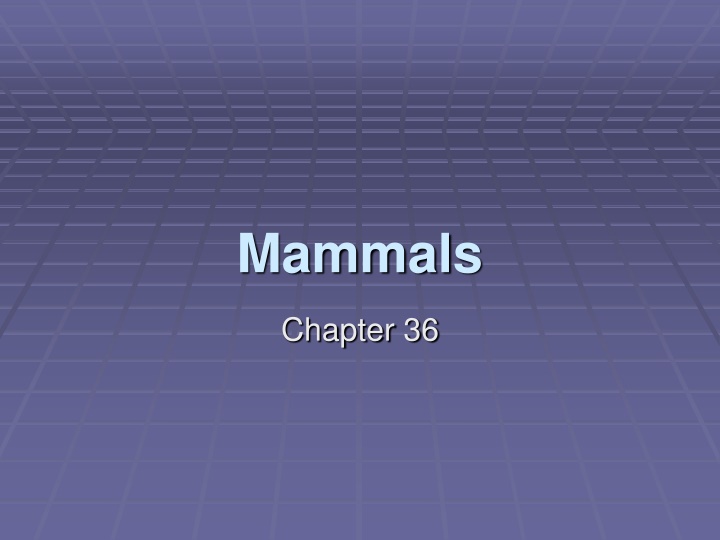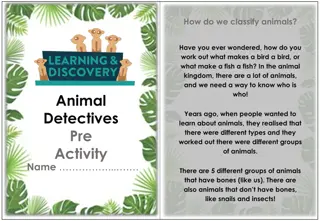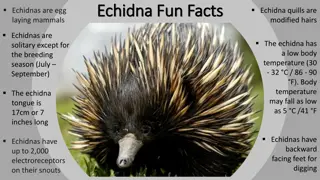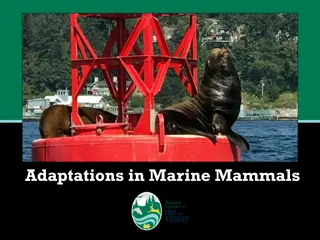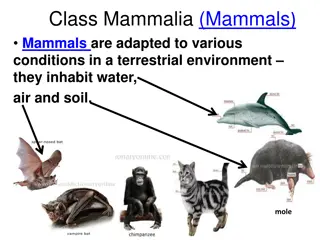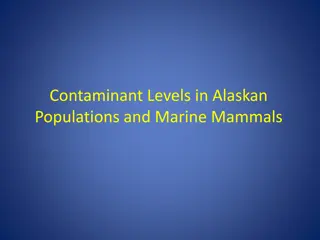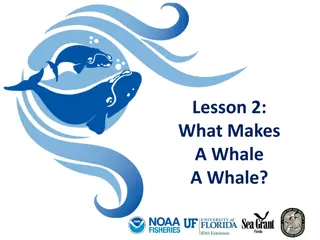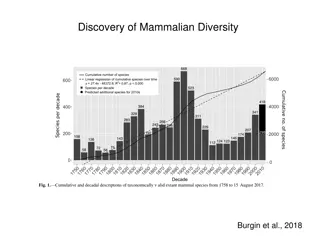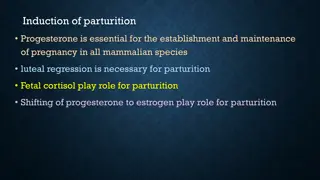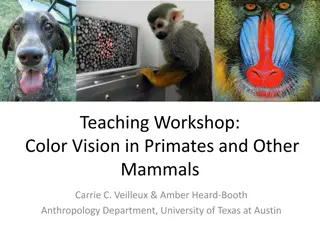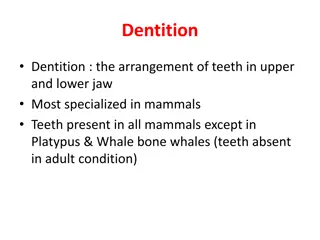Exploring the World of Mammals
Delve into the diverse world of mammals, characterized by unique features like specialized teeth, hair, and mammary glands. Learn about the different groups of mammals, from primitive monotremes to specialized placental mammals. Witness the fascinating adaptations of marsupials, placentals, and various orders like Rodentia, Chiroptera, and Carnivora. Explore the remarkable variety of mammals, including marine pinnipeds and advanced primates like monkeys and humans.
Download Presentation

Please find below an Image/Link to download the presentation.
The content on the website is provided AS IS for your information and personal use only. It may not be sold, licensed, or shared on other websites without obtaining consent from the author.If you encounter any issues during the download, it is possible that the publisher has removed the file from their server.
You are allowed to download the files provided on this website for personal or commercial use, subject to the condition that they are used lawfully. All files are the property of their respective owners.
The content on the website is provided AS IS for your information and personal use only. It may not be sold, licensed, or shared on other websites without obtaining consent from the author.
E N D
Presentation Transcript
Mammals Chapter 36
Section 1 Five key characteristics Some hair Diverse & specialized teeth Endothermic Mammary Glands placenta
Section 1 Mammals have diverse, specialized teeth 1. Molars 2. Incisors 3. Premolars 4. canine
Section 1 Mammary glands are used for milk production Weaning is done when baby animal can feed on their own
Section 2 Todays Mammals 1. Most primitive 2. Order of Monotremata 3. Three living species a. Platypus b. Two species of Echidna Monotremes
Marsupials Include wombats, kangaroos, wallaroos, koalas, and opossums Are born days or weeks after fertilization and fully develop in a pouch
Placental Mammals Placenta - allows diffusion of nutrients and oxygen into the fetus Gestation Period - time when fetus is developing
Todays Placentals Rodentia 40% of placentals Teeth grow continually and are used for gnawing Mice, rat, squirrel
Chiroptera Bats the only mammal capable of flight
Insectivora Eats insects Includes the mighty shrew
Carnivora Eat mostly meat Include cats, dogs, bears, raccoons
Pinnipedia Marine carnivores Have flippers, insulating layer of blubber Include the walrus
Primates Monkey, human Most advanced
Artiodactyla Are called ungulates with even # of toes Have a rumen and chew cud Includes pigs, giraffes, sheep, cattle
Perissocactyla Ungulates with an odd # of toes Include horse, zebras, rhino
Cetacea Live in water Dolphins, porpoises, whale have a plow hole used to breath
Lagomorpha Rabbits and hairs Teeth grow all the time
Sirenia Barrel-shaped body Manatees or called the sea cow
Proboscidea Elephants the largest on land
This powerpoint was kindly donated to www.worldofteaching.com http://www.worldofteaching.com is home to over a thousand powerpoints submitted by teachers. This is a completely free site and requires no registration. Please visit and I hope it will help in your teaching.
